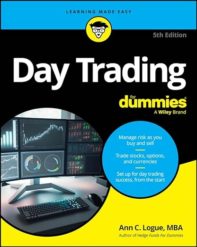I’m sure handwriting advocates dream of a mythical past in which biological females in plaid jumpers and biological males in white shirts and neckties sit with perfect posture and correct paper slant, quietly writing “The quick brown fox jumps over the lazy dog” over and over. My guess is that their vision does not include a crucifix on the wall, a statue of Mary in the corner, and the name of the Saint of the Day written (in beautiful cursive) on the chalkboard.
Let’s not get carried away here.
The standard cursive in the United States was developed by the Zaner-Bloser Company in 1888. It is beautiful. Even today, I get a thrill from a cursive Z. What a beautiful letter! But I struggled mightily with cursive, no matter how hard the Daughters of Charity of St. Vincent DePaul tried. In third and fourth grade, I remember working hard on reports, only earn a red frowny face because my handwriting was so bad. I taught myself to type the summer between fourth and fifth grade, and I was so happy when my upper-level teachers absolved me from cursive. Maybe it’s because they were mostly lay teachers, or maybe they just preferred to read legible papers. In at least one Catholic school in the 1970s, a readable paragraph was better than a pretty one.
I don’t think I’m the only one who has struggled with cursive, or why would Zaner-Bloser face a competing textbook series titles “Handwriting Without Tears”? It’s now 2020, about 45 years since I last wrangled with the distinction between a capital Q and a numeral 2. In Wisconsin, state representatives are now considering legislation that would require all school students to learn cursive. Just this week, a friend told me that her child, an eighth-grader in a Chicago Public School, will lose 50% of points on any paper that is not written in cursive. Legibility is less important than this particular form of artistic impression. It’s like ice skating judges who deduct points because they don’t like the athlete’s costume.
Pinterest is filled with “Share if you think schools should teach cursive again” memes. Invariably, these are done in a cursive that would cause Mr. Zaner and Mr. Bloser to roll over in their graves. The bad slant! Letters that are not formed in a neat line! Lack of introductory stroke in front of words! Curlicues at the end of them! These Pinteresters would not be so smug if their samples had been given the red frowny faces that they richly deserve.
Last winter, I served as Fulbright-García Robles US Studies Chair at the Universidad de Guadalajara, Mexico. Part of my project was trying to figure out what Jane Addams was doing in Guadalajara, a part of her Mexico trip that has not been well documented. Although Addams did not win her Nobel Prize until 1931, she was famous enough that there should be a record of her visit somewhere, but where? Before I left for Mexico, I visited her archives at the University of Illinois at Chicago and read through a microfiche copy of her calendar. I learned two things. First, the exact date of her visit was March 26, 1925.
Second, Jane Addams had very bad handwriting. I was able to determine the dates that she was in Guadalajara mostly by context: I knew she had been to Mexico, and there was only one day’s calendar entry that looked like it was supposed to be “Guadalajara”. The archivist told me that most people who look at the Addams archive comment on her poor handwriting.
It’s a long story, but I still haven’t documented Addams’s visit to Guadalajara. I hope her time there was amazing as mine was, and that it didn’t require neat, legible handwriting. Unless, of course, she was somewhere else on March 26 and I mis-read her notes.
I am kidding. I’m not the only person who thinks Jane Addams paid a visit to Guadalajara in 1925. Archivists and historians study different forms of handwriting and how to decipher it, because there is no one standard system of connected letter formation. Cursive in the UK looks very different from the Zaner-Bloser style we romanticize here, and there were different writing styles in use before Mr. Zaner met Mr. Bloser. Most people who need to use historical archives can figure out how to read historical methods of handwriting with a little time and attention.
There was a time when neat handwriting helped people get good jobs. Whether they were known as secretaries, clerks, or scribes, there have always been people (i.e., women) who did the neat writing for people (i.e., men) who could not or would not do it. The original Zaner-Bloser curriculum was a career program for adults. Comedians have long joked about the bad handwriting of doctors; a 2008 review of medial literature found a decline in medication errors of as much as 66% when hospitals switched from handwritten to electronic prescriptions .
In other words, handwriting kills. That’s my story and I am sticking to it.
After teaching myself to type, I went to college and grad school, worked as a financial analyst, taught finance, and wrote five books about investing. My usually approach to writing is to prepare a first draft in a longhand scrawl that I can read, even if no one else can. Then, I type these notes up and work from there. I recently learned about optical character recognition apps that purport to scan and convert handwriting into text. These could save me so much time! So far, though, the results are proving that tech adage about garbage in, garbage out. I actually find myself concentrating a bit harder when I write now that there is a specific benefit to me for better handwriting. The technology and I both have a way to go; in my last attempt writing and scanning practice sentences, I got back “The quick brown Cox Jumped over the Tazy dog” .
Today, cursive is a party trick. Connected lettering may help some students learn to write, but I’m not the only person who abandoned cursive and went on to be a functional adult. Teachers and students working together can determine what works best for them. We don’t need laws or arbitrary grading guidelines to communicate better, but a little critical thinking might help.


